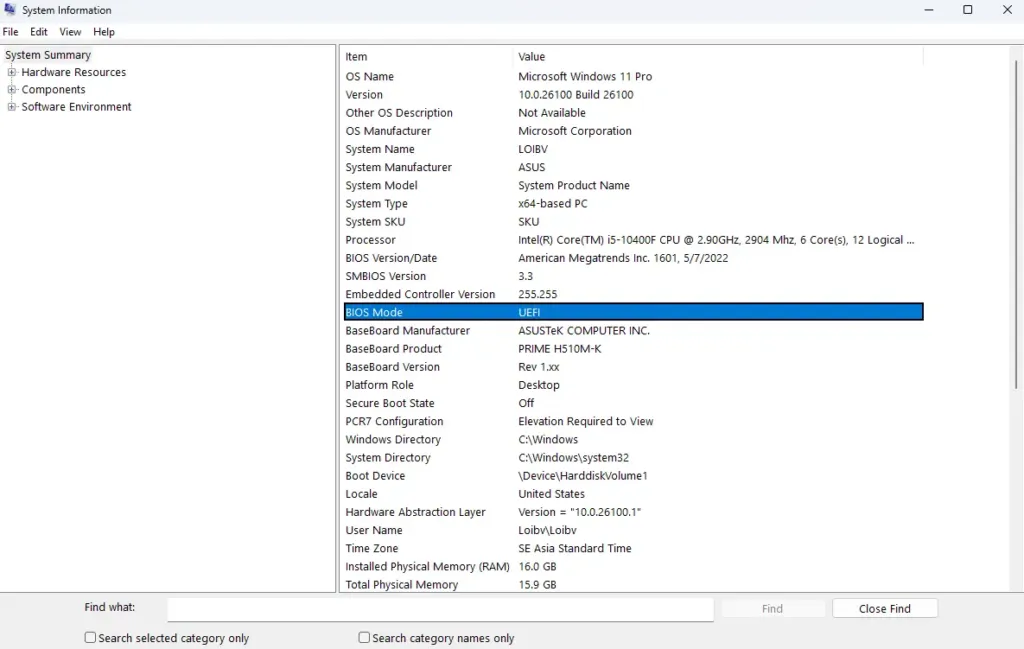No need to wait until you’re installing Windows to realize you’ve screwed up with the wrong disk format. Knowing whether your laptop uses UEFI or Legacy BIOS helps you pick the right boot standard, disk format (GPT or MBR), and avoid annoying issues like unbootable systems or undetected drives. This is a big deal if you’re dual-booting Windows and Linux or restoring from a ghost image.
UEFI vs. Legacy BIOS
Legacy BIOS: The old-school boot system, pre-2010. Barebones interface, only supports MBR disks (capped at 2TB).
UEFI: The modern upgrade, with dope features like:
- GPT disks (handles drives over 2TB)
- Faster boot times
- Beefier security (Secure Boot)
- Slicker interface (some laptops let you navigate BIOS with a mouse)
Most laptops since 2012 support UEFI, and many have ditched Legacy entirely.
1. Check in Windows
Easiest way, works if you’re running Windows 8 or later:
- Open System Information
- Hit
Windows + R, typemsinfo32, press Enter. - Look for BIOS Mode:
- UEFI: Your machine’s rocking UEFI.
- Legacy: You’re stuck with old-school BIOS.

Using a GPT disk with Legacy BIOS? No boot for you. Same deal with an MBR disk on UEFI—total fail. This happens a lot when folks ghost a system with the wrong boot standard, leading to that dreaded “no bootable device” error despite a perfectly fine drive.
2. Check Without Booting Windows
If your system won’t boot, check the firmware setup:
- Power on, mash the BIOS/UEFI key (usually F2, DEL, or ESC, depending on the brand).
- Hunt for the Boot menu:
- See UEFI/Legacy Boot or Boot Mode? Your rig supports both.
- Only Legacy? No UEFI (rare for machines post-2012).
- Spot Secure Boot or Fast Boot? That’s a dead giveaway for UEFI—Legacy doesn’t have those.
When to Switch Between UEFI and Legacy?
- Installing Windows 11? UEFI is a must—Secure Boot and TPM are non-negotiable.
- Running old Linux distros or MBR-based rescue tools? You might need to flip to Legacy.
But UEFI’s the way to go because:
- Supports massive drives (>2TB)
- Tighter security (Secure Boot)
- Boots hella fast
Heads-up: Switching BIOS modes without reinstalling Windows or converting the disk format will bork your boot. Back up your data and know your current standard before messing around.
Checking if your laptop supports EFI/UEFI or Legacy BIOS is no sweat if you know the tricks. From System Information to digging into firmware setup or reading boot mode specs, you don’t need third-party tools. Knowing your standard saves you from reinstall headaches, especially for tech nerds or IT support folks. If you hit a “no boot” snag, double-check these steps or drop a specific question for pinpoint troubleshooting.